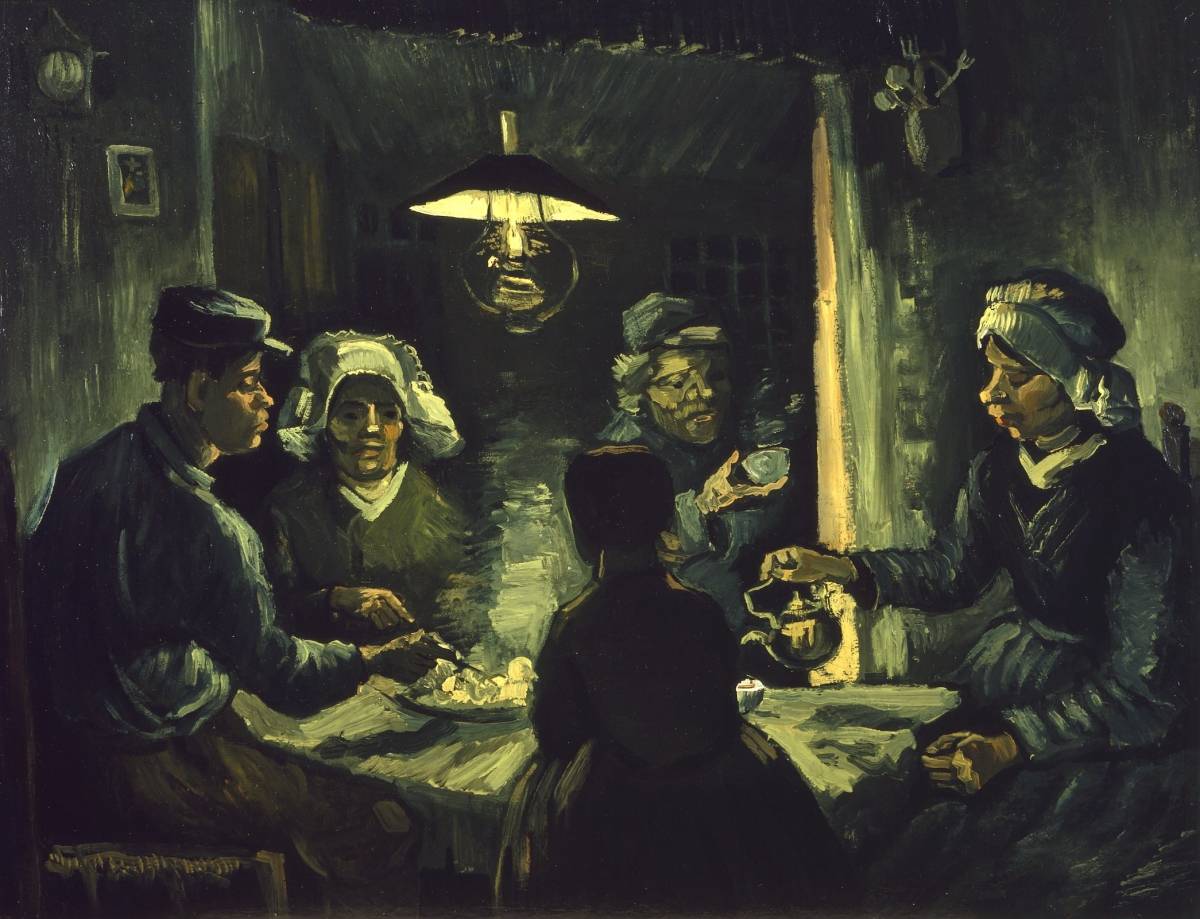The Potato: Symbolism in Van Gogh’s The Potato Eaters

At first glance, the potato is an ordinary, unassuming food. Yet, in Van Gogh’s painting, it becomes a symbol of the hardships of peasant life. Potatoes were the staple sustenance of poor families, often eaten after long days of labor in the fields. By depicting peasants gathered around a meager meal of potatoes, Van Gogh emphasizes the harsh realities of rural existence: a life defined by scarcity and simplicity.
Potatoes grow underground, hidden from view until unearthed by labor. In this sense, they symbolize the human connection to the land. Van Gogh, deeply inspired by peasant life, uses the potato to anchor his subjects to the earth, highlighting a life intimately tied to nature and seasonal rhythms. The act of eating this vegetable becomes an acknowledgment of the human struggle for survival.
Van Gogh deliberately avoided romanticizing or idealizing his subjects. The potato, simple and unglamorous, reflects the reality of peasant existence. The dim lamplight and intimate setting emphasize honesty and authenticity: the peasants are not idealized figures; they are human beings, laboring and nourishing themselves with what the land provides. In this way, the potato becomes a vehicle for Van Gogh’s broader artistic philosophy—celebrating life as it truly is, in all its ruggedness.
Beyond physical sustenance, some art historians argue that the potato carries a moral and spiritual dimension. The simplicity of the meal suggests a kind of quiet dignity and humility, values that Van Gogh admired and sought to portray. In sharing this humble food, the peasants demonstrate communal bonds and a deeper, almost sacred connection to the rhythms of life and labor.
In The Potato Eaters, the potato is far more than a vegetable—it is a powerful symbol of poverty, labor and authenticity. Through this simple yet evocative imagery, Van Gogh captures the dignity and resilience of peasant life, creating a work that resonates with honesty, empathy, and profound human truth.
Main Image: Vincent Van Gogh, The Potato Eaters, 1885. Courtesy Kröller Müller Museum
